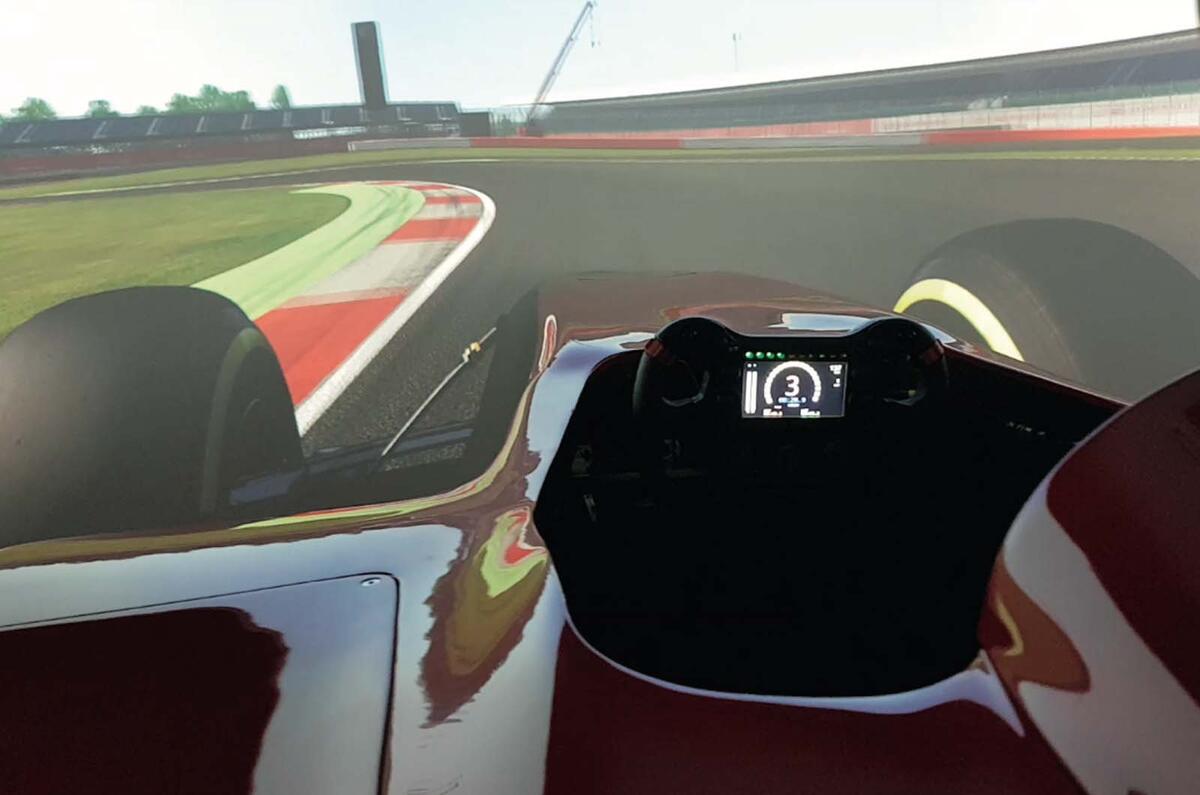Say you wanted a vehicle simulator that accurately represented all of the g-forces you felt in a car, to really make you feel like you were in the driver’s seat.
These machines exist, to a point, moving on runners to impart g-forces on the driver.
Now imagine you wanted it to replicate, say, the Parabolica at Monza. To do so, the machine would need to be on runners 500 metres long. Then, of course, it would be 500m away from where it started.
Simulation racing games are now the real deal
Which is why simulators, as a rule, move you violently a bit, or pitch you onto your side, or shake you. Then, if they’ve moved on runners, they still have to shuffle back to their central position before the next input, hoping you won’t notice. But you do, because the sensations in the simulator never quite match the movement your eyes are seeing on screen. You’re not fooled. You can feel the seat centring, or that it has run out of movement even if you haven’t stopped turning. Perhaps it makes you feel sick. Perhaps it occupies a warehouse, but perhaps even that’s not enough. Except, that is, one I’ve just tried.
I’ve been to Cranfield Simulation, which is part of Cranfield Aerospace and affiliated with the university on the same site but – and this is important – is actually just a normal commercial company with often normal (but sometimes government and occasionally secret) clients.
These include air forces who want pilots to experience authentic g in simulators. And if you think that installing a 500m track for a racing car is a big ask, imagine making one for a Tornado weaving through the central European Alps at 600mph.
So Cranfield Simulation got cleverer: it inputted the g-forces onto pilots bodies by carefully inflating elements of the g-suits they were already wearing, imparting forces onto the right bits of the body, atthe right time, to trick the mind into believing that the forces they felt as they, say, banked hard for seconds at a time, were the forces the screen suggested they should be experiencing. It worked.
Which made them wonder what they could do next. What else involves simulation? Ah. Motor racing.
So here we are. Yes, the reareminor seat movements that can simulate bumps, or sudden oversteer, or gearshifts. But the important bit is what they call a ‘Sustained Motion Cueing System’, and what I’d call a g-chair. It’s a race seat that inflates in places to impart forces onto your muscles and completely fool you into believing what you’re seeing.
To say it works would be an understatement. Am I gushing? I might be gushing. But I drove it, this unreal thing, as hard as I dared for half a dozen laps, and my mind was totally convinced. I pushed harder. I sweated. I nearly crashed. Eventually the tyres went off and I felt that too. It totally sucked me in.
The engineers at Cranfield are coy about which race teams and car makers own its simulators. But when I mention what some engineers and race drivers have told me about how good some simulators are, I detect shared glances and wry smiles that suggest, yes, that’s one of ours.
Now one could be yours. Their next move is to sell these to rich people. What they put on it is modular, so it could be from a couple of tens to more than a hundred grand. Which is a lot. But so is racing and, if you do that, this’ll make you better at it.
Read more
Remote control car parking to become legal in UK from June




Join the debate
Add your comment
I think it's good for
I think it's good for practice, in any case, the news is interesting, thanks
Cool Toy
But $100k wil buy you an actual real race car.
True, but you will only be
True, but you will only be able to crash it once.
Camelot I need you !
Wow. Sounds a great way to spend my inevitable , but as yet missing, massive Eurolottery win.